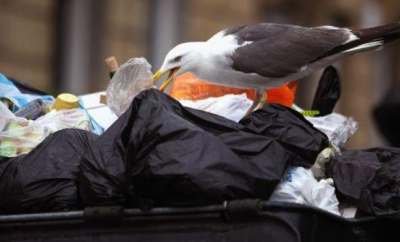Environment
How microfibers from your clothes are destroying the oceans

Image: Shutterstock/conejota
Do you know the most common plastic found in the ocean? It’s not plastic bags or wrappers, it’s the microfibers found in your clothing.
In fact, 60% of the plastic waste found in the ocean comes directly from microfibers.
Microfibers come from man-made fabrics, some of them you may absolutely love, like Lycra, Nylon, Viscose and the new favorite: Spandex.
While Lycra has completely changed sportswear for us, Spandex has changed the way we look in those deep cut dresses. And that is why 75% of the clothing we wear comes from these very man-made fabrics.
But no matter how good these fabrics make us look, is it really worth polluting marine life?
A few years back, a war on the Internet started against the plastic micro-beads present in facial scrubs. There was also a hashtag called #BantheBead, to urge the government not only to ban these plastic beads but also take serious legal action against companies responsible for producing such facial scrubs.
But the amount of plastic micro-beads is literally micro when compared to the micro-plastics, which are ruthlessly flushed in the ocean.
How do our fabrics affect the ocean
Microfibers on clothing shed, just like we shed our skin and hair from time to time. And when we place these clothes in washing machines, the microfibers start a journey of their own.
From 1mm-7 micromilimeters in size, these microfibers travel through water, going through our plumbing system and sewerage systems, and finally reaching lakes, rivers and oceans.
How the microfibers pollute marine life
Since these are plastics at the end of the day, there is no way the microfibers can decompose on their own. They remain on the surface of water, forever.
It has been estimated that there are more than five trillion plastic pieces in the ocean and they are increasing at a rate of eight million tonnes every day. If you can’t estimate that in your head, imagine one garbage truck being dumped into the ocean every minute of the day.
And that is not the only sad part. Plastic acts like a sponge and it attracts other chemicals to it as well, like Lead, nickel, pesticides, and many other industrial chemicals. As the toxic overload from these chemicals increases, they can cause severe damage to the environment. No to mention, they also end up making their way into the marine food chain, and ultimately in the animal food chain when animals and humans eat seafood.
When scientists researched on different fishes in lakes and oceans, they found out that 1 in every 4 fishes had plastic in their stomachs.
And here’s another fact you might not know—recycled plastic doesn’t help. Eco fleece manufactured by recycled plastic sheds two thousand microfibers on an average, and it is actually a lot worse than other non-recycled plastic.
And yet, there have been no tests done on fabrics to determine their long-term impact on our environment.
How can this be stopped
The long-term solution would obviously be to ban any man-made synthetic fibers that shed microfibers and ultimately destroy our environment, but that is obviously easier said than done. Synthetic fibers are cheaper and easily found, as compared to natural fibers. With so many multi-billion corporations manufacturing clothes at an astonishing speed, the pressure on the government is a lot.
But maybe, the government can start by adding extra filters to sewage systems so that microfibers can be stopped at the very beginning and never make their way to the lakes or oceans.
What can we do
Stop buying synthetic fibers, no matter how good they make us look, and educate people about the same. Once we stop buying synthetic fiber clothes, the sales of the companies will decline and they will automatically stop manufacturing a large quantity of these synthetic fibers.
Check the tags on clothes before buying them. You will find all the information about the fabrics in the clothes through those tags. Even if a fabric is marketed as pure cotton or linen, chances are, it has some portions of synthetic fabrics and only clothing tags can tell you that.





0 comments